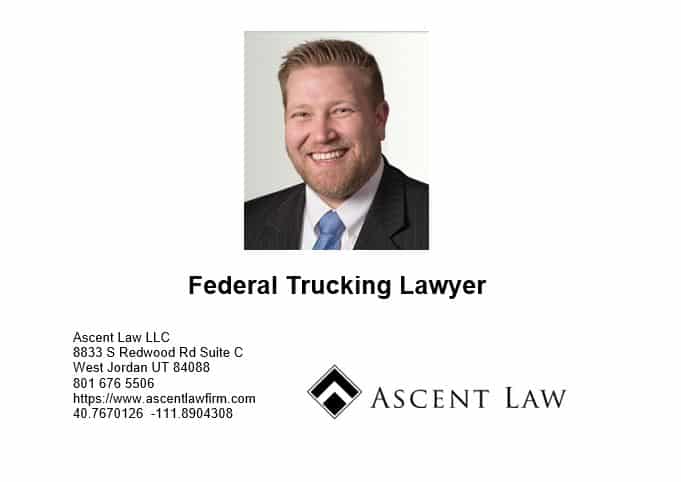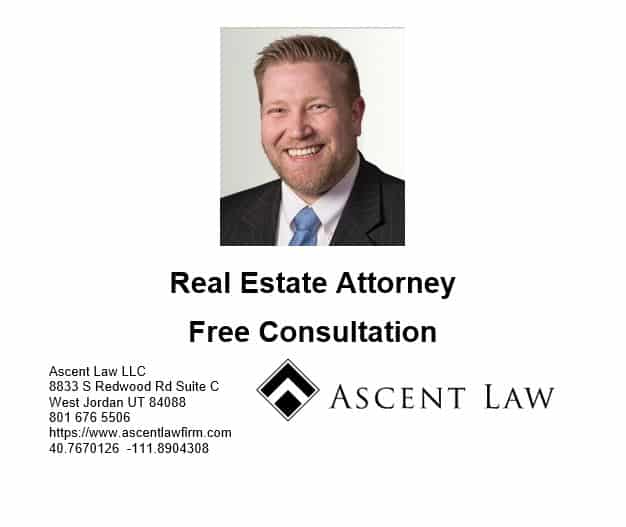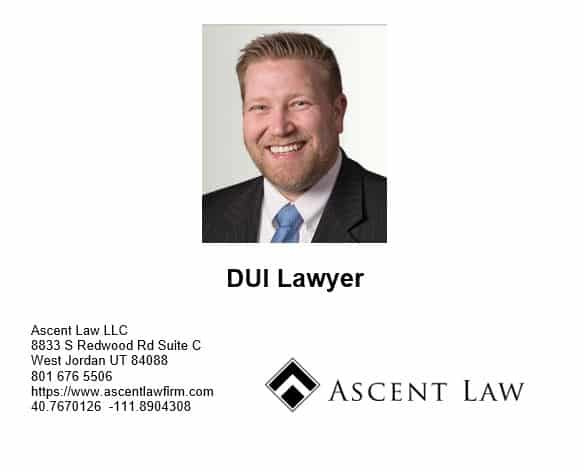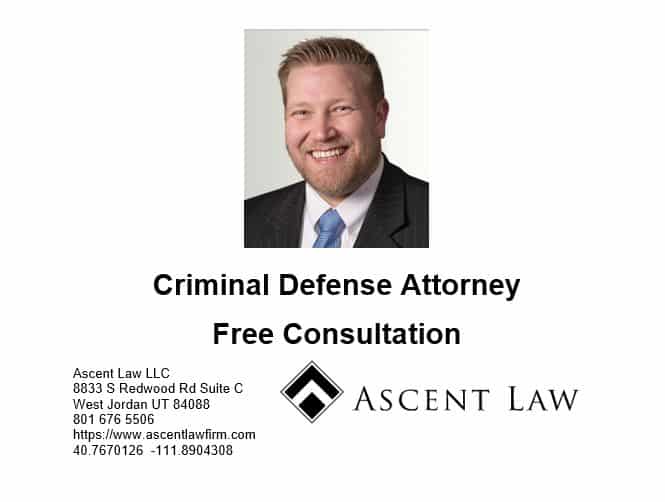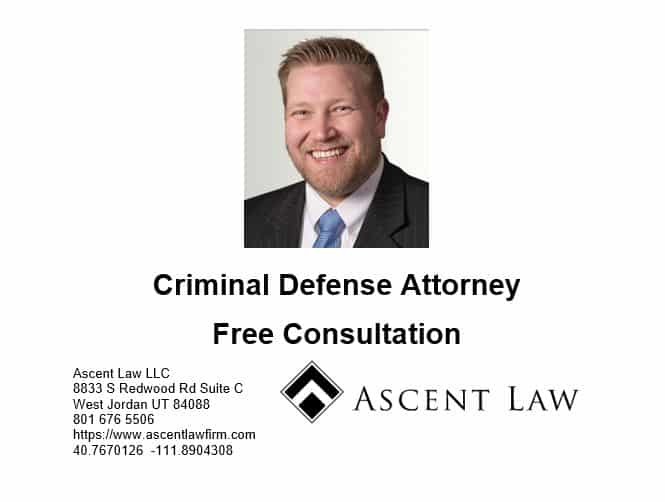
Utah Criminal Code 76-5-102.8: Disarming a Peace Officer–Penalties
1. As used in this section:
a. “Conductive energy device” means a weapon that uses electrical current to disrupt voluntary control of muscles.
b. “Firearm” has the same meaning as in Section 76-10-501.
2. An actor is guilty of an offense under Subsection (3) who intentionally takes or removes, or attempts to take or remove a firearm or a conductive energy device from the person or immediate presence of a person the actor knows is a peace officer:
a. without the consent of the peace officer; and
b. while the peace officer is acting within the scope of his authority as a peace officer.
3. Conduct under Subsection (2) regarding a firearm is a first degree felony.
Conduct under Subsection (2) regarding a conductive energy device is a third degree felony.
Disarming A Peace Officer
Disarming a peace officer is a relatively simple criminal offense. At trial the an attorney must show five separate elements:
• The victim was a peace officer;
• The victim was acting in an official capacity;
• The defendant disarmed the victim by taking a dangerous weapon from him;
• The victim did not consent to the taking of the dangerous weapon; and
• The defendant intentionally committed the acts.
Peace officer “means any person vested by law to maintain public order or to make arrests for crime, whether that duty extends to all crimes or is limited to specific crimes. ‘Peace officer’ includes a commission warden and a university police officer…” A peace officer acts in an “official capacity” when that officer performed acts that they are employed to perform. In the midst of a scuffle with law enforcement, whether done intentionally or unintentionally, an individual can be charged with attempting to disarm. The alleged attempt of disarming can involve the gun of a police officer or his baton, pepper spray, handcuffs or any other list of items that constitute a weapon. As you now unfortunately know, a charge for disarming a police officer enters into a very murky area when it comes to your liberty although this offense is less than cut-and-dry in many cases. A skilled criminal attorney can frequently take advantage of the facts and law in these cases and avoid jail, etc.
How Serious Is A Disarming Law Enforcement Charge?
Disarming a Law Enforcement Corrections Officer is a second degree crime and can result in up to 10 years in prison. However, this charge can be enhanced to a first degree crime that carries as much as twenty years in prison and a $200,000 fine under certain circumstances that are discussed later.
When Does Someone Attempt To Disarm A Peace Officer?
There are three elements that must be present in order for a guilty verdict to be rendered. Specifically, they include:
• That the defendant knowingly took or attempted to exercise unlawful control over a firearm or other weapon in the possession of a law enforcement or corrections officer;
• While that officer is acting in the performance of his duties; and
• That officer is either in uniform or exhibits evidence of his authority.
The third element of this offense tends to be the trickiest for the State to prove in their case-in-chief. Primarily because undercover officers may be disarmed in the heat of an operation but never exhibit any authority or evidence of their power as a law enforcement officer. Developing these proofs in your case can be the difference between a conviction and exoneration.
Enhancement to First Degree Disarming of a Peace Officer
As mentioned above, the majority of charges for disarming a peace officer are in the second degree. However, under certain circumstances these charges will enhance to a crime of the first degree. Specifically, this will happen if, in addition to disarming the cop:
• The defendant fires or discharges the firearm;
• The defendant uses or threatens to use the firearm or weapon against the officer or any other person; or
• The officer or another person suffers serious bodily injury.
Most likely if someone is convicted of disarming a peace officer in the first degree, as previously stated, they are exposed to twenty years of incarceration. In addition, there is a presumption that they will go to jail which means that imprisonment is a virtual certainty if convicted. The No Early Release Act (“NERA”) applies to disarming convictions so that a defendant has to serve 85% of the jail/prison sentence imposed before eligible for parole. The presumption of incarceration and NERA also apply to second degree disarming. A person charged under the statute can be subjected to a first-degree or second-degree offense, depending on the extent of the encounter. It is a second-degree offense for a suspect to attempt to disarm or to actually disarm a peace officer. Where the disarming progresses to the point that the gun or firearm discharges and/or is fired, the gun is pointed or used against the officer, or a person suffers serious bodily injury, the charge is a first-degree offense. In either case, we are talking about a serious criminal indictment which carries a presumption of incarceration. It is therefore crucially important for an individual to hire a knowledgeable attorney to defend him given the exposure associated with a conviction. In order to prove a second-degree indictment or charge for disarming in Utah, the prosecutor must establish:
• that the suspect knowingly took or attempted to take control of a firearm or weapon;
• the weapon or firearm was possessed by a member of law enforcement;
• the law enforcement officer was acting in the performance of his duties; and
• the law enforcement officer was in uniform or exhibited evidence of his authority.
• An additional element must be established by the state where an individual is charged with a first-degree offense—that the firearm went off, the firearm or weapon was used to threaten the peace officer, or someone suffered serious bodily injury. The first element is established when there is an interference with the officer’s possession or control of the weapon.
Any individual who knowingly attempts to take control or actually exercises unlawful control over any weapon or firearm possessed by a peace or corrections officer acting within the performance of their duties is committing a Second Degree Offense.
The crime shall be considered a First Degree Offense if:
The individual actual discharges or fires the firearm
The individual threatens to use or uses the weapon or firearm against any other person, including the police officer; or
Any other person involved, including the police officer, suffers serious bodily injury
If the accused attempted to disarm or actually disarmed a police officer, they are facing charges for a Second Degree Criminal Offense. If and when the act of disarming progresses and the officer or another individual is harmed and/or the gun is fired or used against the officer, the defendant faces charges for a Second Degree Offense. Regardless of the charge, disarming a law enforcement officer is a serious criminal indictment and often carries the penalty of incarceration. It is critical to your case to hire a knowledgeable attorney for the best defense possible.
To prove a Second Degree indictment for a disarming charge in New Jersey, the prosecutor must establish all of the following:
The individual knowingly attempted to take or actually took control of the a weapon
That weapon was in the possession of a member of law enforcement
The law enforcement officer was acting within reasonable performance of their duties
The law enforcement officer in question was in uniform or exhibited evidence of their authority
Furthermore, to prove the elevated charge of a First Degree Offense for disarming an officer of the law, the prosecutor must additionally prove the firearm went off, the weapon was used as a threat against the peace officer, or someone suffered serious bodily injury as a result of the disarmament. A weapon refers to any object capable of inflicting serious bodily injury or lethal use. If the individual accused of disarmament has acted lawfully, such as in justified self-defense or a superior law enforcement officer, there is no guilt of disarming an officer. Serious bodily injury refers to bodily injury that causes serious, permanent disfigurement, protracted loss or impairment of any bodily member, or substantial risk of death.
Common Offenses You May Be Charged With For Assaulting A Law Enforcement Officer
Assault and battery is a serious offense in Utah that can cause long-term consequences in a person’s life. If a person is charged with assaulting a police officer, the charges can be even more serious. Due to all the news about police assaults, shootings, and killings of officers, the police are becoming increasingly intolerant of any actions that may be interpreted as physical resistance or assault. If you have been charged with an assault on a police officer or a similar offense, you need the assistance of an experienced violent crimes attorney to reduce the harsh sentence that you may face. A person can commit battery through any offensive or harmful conduct, which can be as minor as throwing a snowball or small object at someone, if the person makes some contact with the victim and intended harm to the victim. An assault is an intentional act that makes a person think that he will be offensively touched or intentionally harmed. Since a battery is any unwanted touching, these charges can be raised for any minor action of a suspect. This law applies to police officers and many other government officials, including:
Judges
Correction officers
Firefighters and volunteer firefighters
Rescue squad personnel
If you are convicted of this offense, you face a mandatory minimum prison sentence of six months in jail that can be increased to one to five years in prison. You may also be fined a maximum of $2,500.
Obstruction of Justice Charges
You may also be charged with obstruction of justice if you prevent the police officer from performing his duties. This offense can also be charged with obstructing a judge, juror, prosecutor, or attorney. You may be charged with this for:
Using force or threats of force to impede a peace officer
Threatening body harm to impede a peace officer
Making a false representation to a police officer who is investigating a crime.
Obstruction of justice is generally a Class 1 misdemeanor with a possible sentence of up to 12 months in jail and a fine of up to $2,500. However, a person can be charged with a Class 5 felony if he knowingly attempts to intimidate or impede a peace officer and does so in a court in relation to a drug offense or felony.
Resisting Arrest Offenses in Utah
Resisting arrest is similar to obstructing justice but is a different offense in Utah. Both involve intentionally impeding a peace officer from performing his duties. Unlike resisting arrest, you may be charged with obstruction of justice in situations other than an arrest. Under Utah law, you may be arrested for resisting arrest for intentionally preventing or attempting to prevent a law enforcement officer from arresting you, with or without a warrant. This is defined as fleeing under one of these circumstances:
The peace officer is applying physical force
The peace officer communicates to you that you are under arrest
The peace officer has the legal right to and the immediate physical ability to do so
A reasonable person would know or should know that he is not free to leave
Resisting Arrest: Laws, Penalties, and Defense
Resisting arrest occurs when a person interferes with a law enforcement officer’s attempt to perform a lawful arrest. Some states call the crime “obstruction.” Resisting arrest occurs when a person interferes with a law enforcement officer’s attempt to perform a lawful arrest. Some states call the crime “obstruction.” The crime can be a felony or a misdemeanor, depending on the severity of the actions of the person being arrested. Misdemeanor resisting arrest (or misdemeanor obstruction) can include actions such as running and hiding from a law enforcement officer. Felony resisting arrest usually requires that a person either act violently toward the arresting officer or threaten to act violently.
Felony Resisting Arrest: What Does the Prosecutor Have to Prove?
In order to secure a conviction for resisting arrest, the prosecutor must produce evidence on the following issues, called the “elements” of the offense, and the judge or jury must decide that the prosecutor has proved each one of them beyond a reasonable doubt. While the elements of the crime may vary from state to state, usually all of the following must be true:
The defendant intentionally resisted or obstructed a law enforcement officer. This means the defendant intentionally acted in a way to hinder the arrest. However, the person need not have intended the result or harm that his actions caused.
The defendant acted violently toward the law enforcement officer or threatened to act violently. For example, striking or pushing the officer would satisfy this requirement. Similarly, a defendant’s threat to strike an officer with an object in the defendant’s hand would also satisfy this requirement.
The law enforcement officer was lawfully discharging his official duties. This means the law enforcement officer was properly engaged in the performance of official duties, such as investigating a crime or making a traffic stop. A law enforcement officer can be acting lawfully even when arresting the wrong person and even if the charges are dropped or the defendant secures an acquittal at trial. (Read more on your rights if you’re arrested.)
Call Ascent Law LLC For Legal Help
If you are facing a charge of resisting arrest, consider consulting with an experienced criminal defense attorney who regularly practices in your area. A lawyer can evaluate the strength of the prosecution’s case against you and help develop any defenses you might have. For example, if you believe that your resistance was justified because the arrest was unlawful, you’ll need to know whether your state recognizes this defense, as explained above. A lawyer’s skillful negotiation with the prosecutor can sometimes result in a reduction of felony resisting arrest charges to misdemeanor charges, or even dismissal of the charges. A local criminal defense attorney, who knows how the prosecutors and judges involved in your case typically handle such cases, can assist with these negotiations. And if you decide to go to trial, having a good lawyer in your corner will be essential.
Criminal Lawyer in Utah
When you need to defend against criminal charges in Utah, please call Ascent Law LLC for your free consultation (801) 676-5506. We want to help you.
8833 S. Redwood Road, Suite C
West Jordan, Utah
84088 United States
Telephone: (801) 676-5506
Recent Posts
Armed Robbery Legal Defense In Utah
{
“@context”: “http://schema.org/”,
“@type”: “Product”,
“name”: “ascentlawfirm”,
“description”: “Ascent Law helps you in divorce, bankruptcy, probate, business or criminal cases in Utah, call 801-676-5506 for a free consultation today. We want to help you.
“,
“brand”: {
“@type”: “Thing”,
“name”: “ascentlawfirm”
},
“aggregateRating”: {
“@type”: “AggregateRating”,
“ratingValue”: “4.9”,
“ratingCount”: “118”
},
“offers”: {
“@type”: “Offer”,
“priceCurrency”: “USD”
}
}
Ascent Law St. George Utah Office
Ascent Law Ogden Utah Office
The post Utah Criminal Code 76-5-102.8 first appeared on Michael Anderson.
Source: https://www.ascentlawfirm.com/utah-criminal-code-76-5-102-8/

